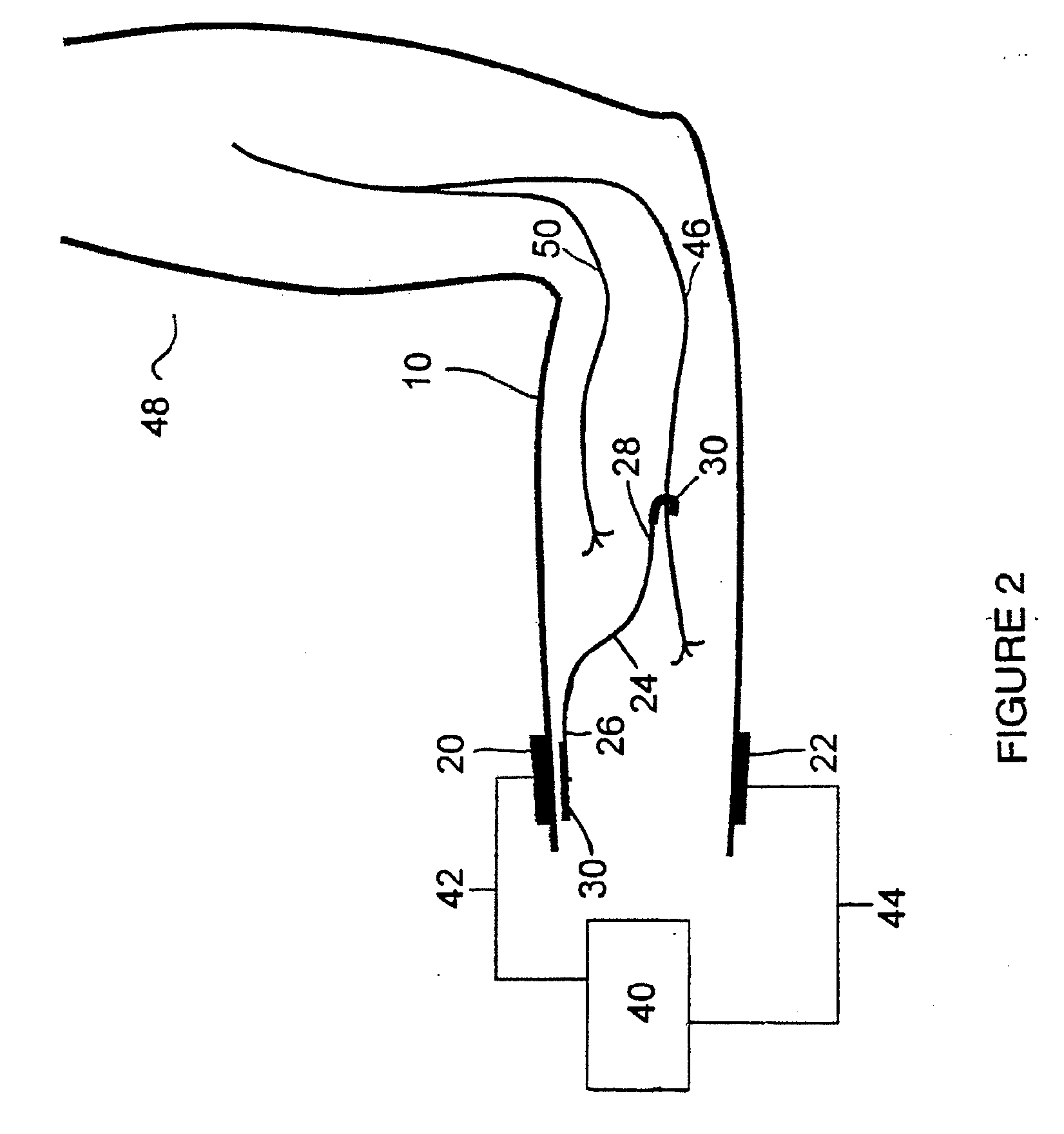Method and system for controlled nerve ablation
a nerve ablation and nerve technology, applied in the field of nerve ablation methods and systems, can solve the problems of many non-targeted tissues co-activating with the targeted tissues, unwanted sensations and/or unwanted movements, and difficult or insufficient stimulation of tissues deep within the body, and achieve the effect of simple procedur
- Summary
- Abstract
- Description
- Claims
- Application Information
AI Technical Summary
Benefits of technology
Problems solved by technology
Method used
Image
Examples
experiment 1
Controlled Nerve Ablation in Anesthetized Rabbits
[0143]In experiments performed in anesthetized rabbits, partial or complete blockade of conduction in the sciatic and common peroneal nerve was achieved by placing a first (blocking) nerve cuff containing a metal electrode of 0.5 cm2 surface area on the nerve and delivering feedback-controlled continuous direct current through the electrode to the nerve, with the use of a remote reference electrode on the skin. Numerous combinations of current amplitude and duration were explored, in the range 0.2 mA to 6 mA and 1 minute to 45 minutes. The extent and duration of conduction block caused by the direct current were measured indirectly, by observing the extent and duration of attenuation of muscle twitches elicited by pulsatile stimuli delivered to the nerve by a second nerve cuff proximal to the blocking nerve cuff. The amount of attenuation of twitches and how much recovery occurred after direct current delivery ceased, depended on both...
experiment ii
Controlled Nerve Ablation in Anesthetized Rabbits
[0146]In a further animal experiment with a cat, nerve cuffs were implanted chronically. Over a period of several months, every two weeks, the amplitude and duration parameters were systematically explored during short periods of anesthesia, attenuation again being measured in terms of the decline in twitch forces. The results were similar to those described above for Experiment I. In the final experiment, 100% twitch attenuation was achieved by delivering 0.5 mA for 45 minutes (which corresponds to 1.35 coulomb of charge) through a delivery terminal of surface area 0.5 cm2. There were no signs of fasciculation or pain or discomfort after recovery from anesthesia after any of these procedures, even though the nerve had been temporarily or permanently blocked through nerve ablation. This indicated that although many axons were destroyed, including both motor and sensory axons, none were left in a spontaneously active state, as can occu...
PUM
 Login to View More
Login to View More Abstract
Description
Claims
Application Information
 Login to View More
Login to View More - R&D
- Intellectual Property
- Life Sciences
- Materials
- Tech Scout
- Unparalleled Data Quality
- Higher Quality Content
- 60% Fewer Hallucinations
Browse by: Latest US Patents, China's latest patents, Technical Efficacy Thesaurus, Application Domain, Technology Topic, Popular Technical Reports.
© 2025 PatSnap. All rights reserved.Legal|Privacy policy|Modern Slavery Act Transparency Statement|Sitemap|About US| Contact US: help@patsnap.com



